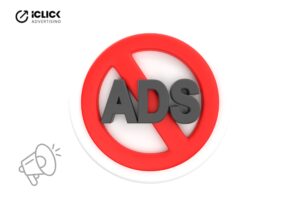Paid ads can be one of the most powerful growth tools for online stores, but only when managed the right way. The same campaigns meant to bring sales can quickly drain budgets without careful planning. Studies show that billions of dollars are wasted each year in digital ads due to fraud, poor targeting, and overlooked technical details. These are not small oversights; they are preventable online marketing mistakes in e-commerce digital advertising that separate profitable campaigns from losing ones.
In this blog, we will talk about the most common pitfalls, share real data to prove why they matter, and help you understand how to avoid them in your own campaigns.
1. Focusing on ROAS Instead of Profit
Many store owners chase high ROAS (Return on Ad Spend) numbers. While a 5x ROAS looks attractive, it does not always mean profit. Extra costs like shipping, discounts, and transaction fees reduce margins.
Research shows that 26% of ad budgets are wasted because of wrong targeting or poor strategy. This means that a good-looking ROAS can still result in losses. Paid ads should be tracked against profit, not just revenue. This small change in focus can help businesses make smarter decisions in ecommerce PPC management.
2. Not Giving Platforms Enough Data
Ad platforms like Google or Meta rely on data to improve performance. Without customer signals such as purchase events, product values, or repeat buyer lists, campaigns cannot optimize properly.
The global average website conversion rate is only 3.68%. That means most visitors do not buy, which leaves ad platforms with little useful information to learn from. Businesses can give their campaigns a better chance to succeed by enabling tracking tools and sharing clean data.
3. Letting Performance Max Spend Everywhere
Performance Max is one of the popular e-commerce advertising methods, but many advertisers let it run without control. This often leads to spending on irrelevant placements or even cannibalizing branded search terms.
A 2025 report showed that advertisers wasted $26.8 billion globally on low-quality impressions in programmatic campaigns. Without guardrails, PMax can fall into the same trap. Setting exclusions and reviewing reports helps avoid waste and keeps spend focused on the right customers.
4. Over-Controlling Ads With Too Many Rules
Responsive Search Ads are designed to test multiple headline and description combinations. However, some advertisers pin every headline, forcing the ad to look the same every time. This reduces ad strength and reach.
Globally, 56% of ad impressions are never even seen by a real person because of placement issues. Over-controlling ads only add to this waste. It is better to give ads some freedom to test and then refine based on actual performance.
5. Auto-Applying Every Recommendation
Platforms like Google Ads and Meta suggest changes to campaigns. While some are helpful, many recommendations are generic. Auto-applying all of them can lead to higher bids, irrelevant keywords, or broad targeting.
About 22% of all digital ad spend worldwide is lost to fraud and wasted clicks. Adding auto-applied mistakes on top of this only increases the loss. Advertisers should review recommendations manually and choose the ones that align with their goals. Working with an e-commerce advertising company can help keep these errors in check.
6. Stopping Campaigns Too Soon
It is tempting to pause a campaign if sales are not immediate. However, many shoppers take days before completing a purchase. This is known as conversion lag. Ending campaigns too quickly means losing out on delayed conversions.
At the same time, 70.19% of shopping carts are abandoned globally. Many of these can be recovered with remarketing over the next few days. Giving campaigns enough time allows ads to capture these delayed buyers.

7. Poor Product Feed Setup
Google Shopping campaigns depend on product feeds. Missing details like GTINs, incorrect prices, or outdated stock can cause disapproval and reduce visibility.
Fixing product and checkout issues can improve conversions by 35.26% on average. That is a major gain without increasing ad spend. Clean product data is one of the simplest ways to improve shopping Ads results.
8. Running the Same Ad Creatives for Too Long
Users quickly get bored when they see the same ad again and again. On platforms like Meta and TikTok, ad fatigue often sets in within one to two weeks.
When this happens, click-through rates drop and costs per click rise. Meta even marks ads with “creative fatigue” when engagement falls. Regularly updating images, videos, and messages keeps the audience engaged and prevents costs from rising.
9. Scaling Ads Without Fixing Checkout
Many online stores scale ad budgets without improving their checkout process. This creates a leak where more money brings more traffic, but sales do not grow.
The top reason for cart abandonment is extra costs such as shipping and fees, which cause 48% of users to drop out. Another 22% leave because the checkout is too long or complicated. Without fixing these issues, scaling ads only amplifies wasted spending.
10. Paying for Existing Customers Instead of New Ones
Some campaigns spend heavily on retargeting past buyers. While retargeting can be useful, relying on it too much means paying for customers who might have purchased anyway.
Studies show that acquiring a new customer costs 5–7 times more than keeping an existing one. Ads should be balanced between bringing new buyers and retaining current ones. Overspending on retargeting reduces the long-term growth potential of campaigns.
Frequently Asked Questions
1. How much budget should a small eCommerce store start with for paid ads?
There is no universal budget, but starting with $500–$1,000 per month is common for small stores. The key is to keep spending targeted and monitor results closely with proper paid management practices.
2. What is the biggest hidden cost of running ads?
Beyond the click price, hidden costs include shipping, returns, discounts, and transaction fees. These cut into profit margins, which is why focusing only on revenue metrics can be misleading.
3. How often should I refresh ad creatives?
On fast-paced platforms like TikTok or Meta, fatigue often appears within 7–14 days. Rotating creatives regularly keeps engagement high and prevents costs from rising.
4. What is one quick fix if my ads are not converting?
Start with the checkout process. Simplify forms, show full costs early, and add flexible payment options. Studies show these changes can lift conversions by 20–35%.
5. How do I know if my ad spend is being wasted?
Warning signs include high clicks with low sales, rising cost per purchase, or products not showing in Google Shopping. Partnering with an experienced e-commerce advertising company can also help identify where money is being wasted.
Conclusion
Paid ads can be a powerful growth engine for eCommerce, but they often fail when hidden mistakes go unnoticed. From chasing the wrong metrics to ignoring product feeds and checkout leaks, small errors can cost thousands of dollars.
By understanding these eCommerce Stores mistakes and applying smarter strategies, online stores can protect their budgets and achieve better results. The goal is not just to run ads, but to run them with the right approach.
If you are looking for guidance on proven e-commerce marketing methods that deliver real returns, iClick Advertising can help you make every ad dollar count. Book a strategy call today.




